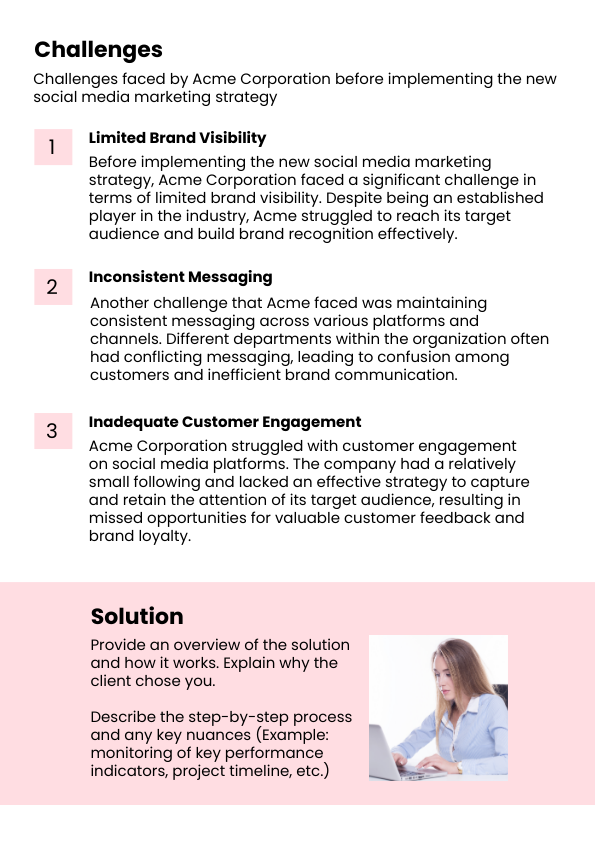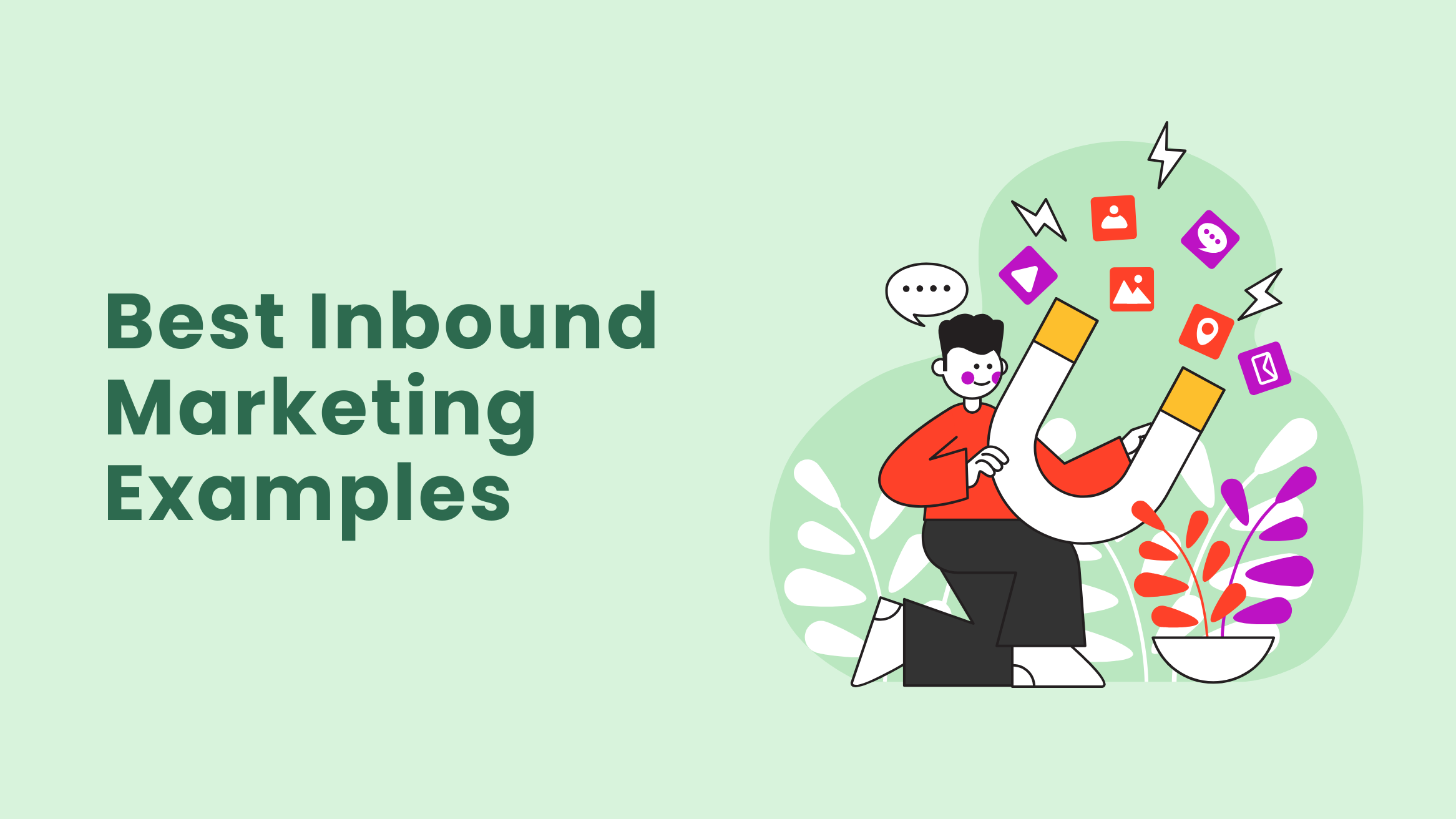
25 Best Inbound Marketing Examples for All Funnel Stages

Are you an entrepreneur or a B2B marketer? Tired of trying every marketing hack out there only to see your business falling face down? I get it – I’ve been there. So, I’m here to shed some light on what might be missing from your marketing game plan: your inbound strategy.
Inbound marketing has never been as pivotal as it is now! Whether struggling with lead generation, brand awareness, or keeping your audience hooked, mastering inbound marketing can turn things around for you. I will share some gold-standard inbound marketing examples so you can learn how to skyrocket your business growth from the best.
25 Best Inbound Marketing Examples for Your Business
- How-To Guides: Practical, step-by-step, actionable, and engaging.
- Industry News and Trends: Timely, relevant, informative, and SEO-optimized.
- Listicles: Easy-to-read, resourceful, and concise format.
- Guest Posts and Link Building: Boosts visibility, credibility, and search rankings.
- Reviews, Recommendations, and Comparisons: Insightful, unbiased, and decision-making support.
- Seasonal and Topical Content: Timely, relevant, and highly shareable.
- Problem-Solving Blogs: Addresses pain points and provides solutions.
- Thought Leadership Blog: Insightful, authoritative, and builds trust.
- Case Studies: Demonstrates success, builds trust, and provides insights.
- White Papers: In-depth, research-backed, and lead-generating.
- Ebooks: Informative, lead-generating, and cost-effective.
Read on and explore these and more unbeatable inbound examples that can turn your business around.
P.S. Inbound marketing is like a magnet for your business, drawing in potential customers by creating valuable content that answers their questions and solves their problems.
Table of Contents
25 Best Inbound Marketing Examples that Your Business Can Leverage
Let’s discuss the best creative inbound marketing strategies that have helped many popular and rising brands reach new heights of visibility and credibility, ensuring sustainable growth with promising customer acquisition and retention.
Before discussing real-world examples of inbound marketing, it’s crucial to clearly understand the specific strategies or tools required for each stage. This will ensure that you achieve the desired outcomes. So, what are the three stages of inbound marketing? These three stages are attract, engage, and delight, depending on the funnel you plan.
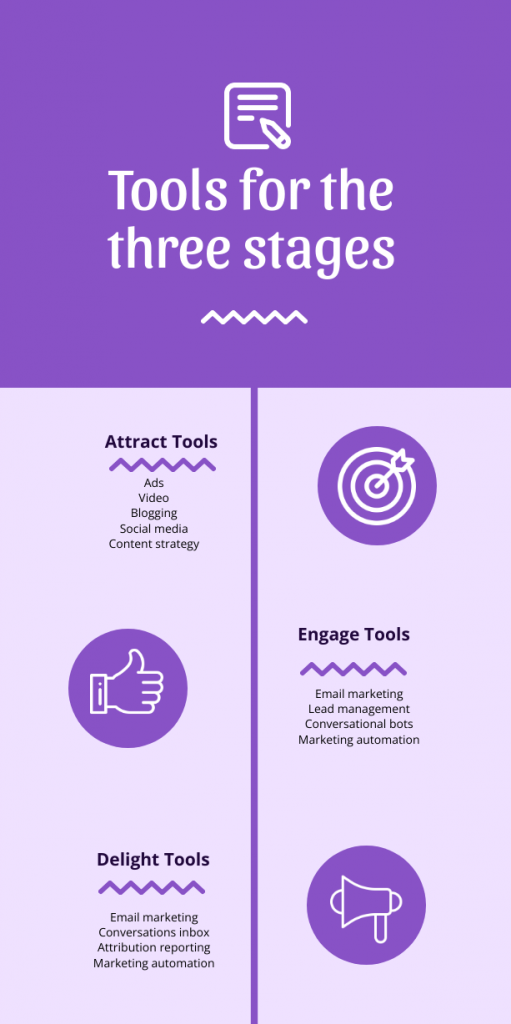
Let’s talk about the epitome of inbound marketing: 25 types of inbound marketing examples that mostly revolve around high-quality content, creative promotional strategies, and the use of correct keywords in your content to target your ideal audience.
A. Inbound Marketing with Blogs
Creating compelling content is always a challenge. It’s time-consuming, requires a lot of creative energy, and sometimes doesn’t deliver the expected outcomes. But it doesn’t have to be that tough, right?
Perhaps you’ve been approaching it wrong from the start. You must dive deep to truly connect with your audiences and understand their pain points and the psychology behind their online searches. As a savvy marketer, you can leverage indispensable tools like Google Keyword Planner, Ubersuggest, Semrush, and “people also ask” to kickstart your inbound marketing journey. Explore the 20+ best tools for startups that I recommend to revolutionize your marketing efforts and enhance client satisfaction.
Why is this important? These tools empower you to shape your content strategy effectively. They help you identify the right niches, topics, and keywords that resonate with your target audience, ensuring your content meets demand and engages effectively.
Now, we’ll explore well-known types of example inbound marketing blogs that you can use for every stage of your marketing funnel.
1. How-To Guides
How-to guides in inbound marketing blogging are essential resources that provide practical, step-by-step instructions to help readers achieve specific objectives or solve particular problems. These guides must be informative, actionable, and match the target audience’s needs. By offering clear solutions and expert advice, How-To blogs attract organic traffic through SEO and establish the brand’s credibility and authority in its industry.
Example
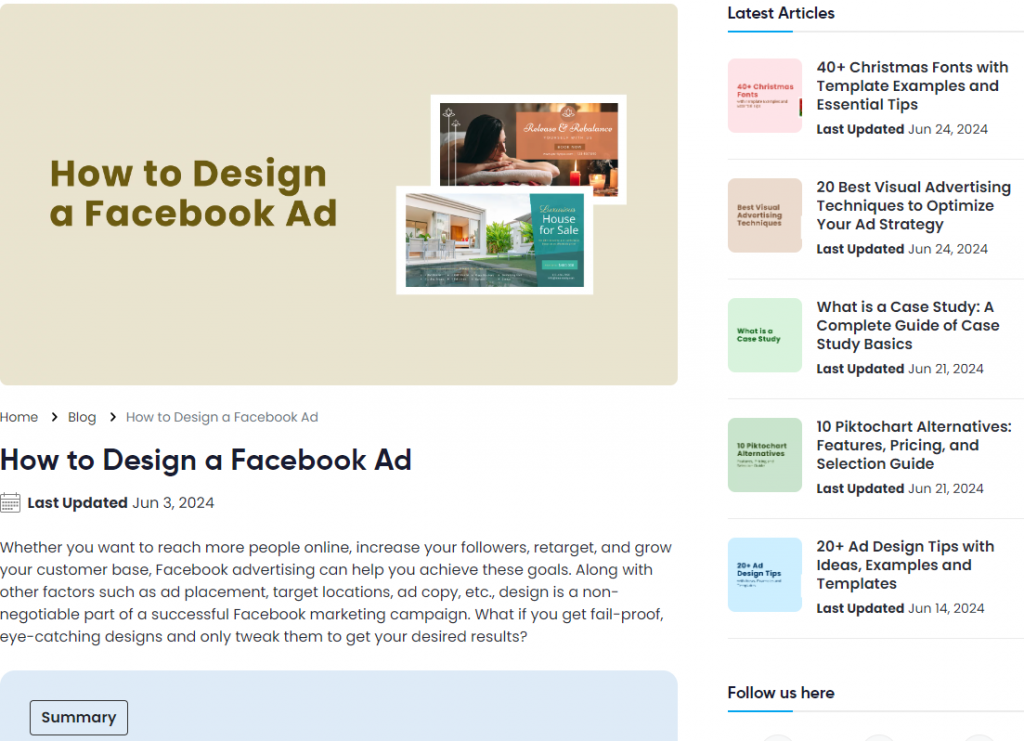
Why it worked
The blog post on DocHipo’s site is an excellent example of inbound marketing because it’s super practical and easy to follow. It gives you step-by-step instructions with free templates and visuals that make the process understandable. The engaging language and helpful tips make readers feel like they’ve got a personal guide. Plus, it’s packed with actionable insights that keep you hooked. This approach not only educates but also builds trust, driving both engagement and conversions.
2. Industry News and Trends
Keeping up with industry news and trends is like having a finger on the pulse of your market. Blogging about these topics not only positions your brand as a thought leader but also draws in readers who are hungry for the latest information. By offering timely and relevant content, you can attract a dedicated audience, boost your SEO rankings, and engage with your target market on issues that matter to them. Plus, staying updated on trends helps you anticipate changes, adapt strategies, and stay ahead of competitors.
Example
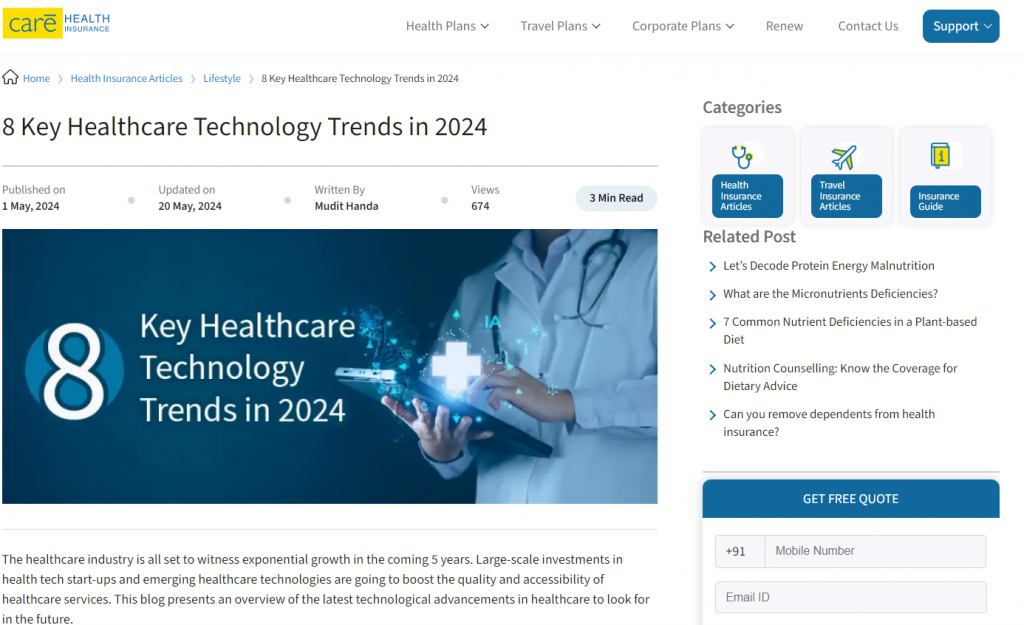
Why it worked
The blog post from Care Insurance is a prime example of successful inbound marketing. It works because it taps into a timely and relevant hot topic — healthcare technology. Discussing the latest advancements and their impact on health insurance provides valuable insights that attract and inform its target audience.
You can, too, increase your website traffic by making the content well-researched and engaging, offering readers a comprehensive overview of significant trends. Additionally, keep your blogs optimized for SEO with relevant keywords like this one, which increases your reach for a broad audience searching for this information.
3. Listicles
Listicles, or list-based articles, are fantastic for inbound marketing blogs because they are easy to read, engaging, and highly resourceful. They provide readers with valuable information in a concise, digestible format, making it effortless to find what they need quickly. This format appeals to busy audiences who want quick takeaways without filtering through long, dense paragraphs.
Example
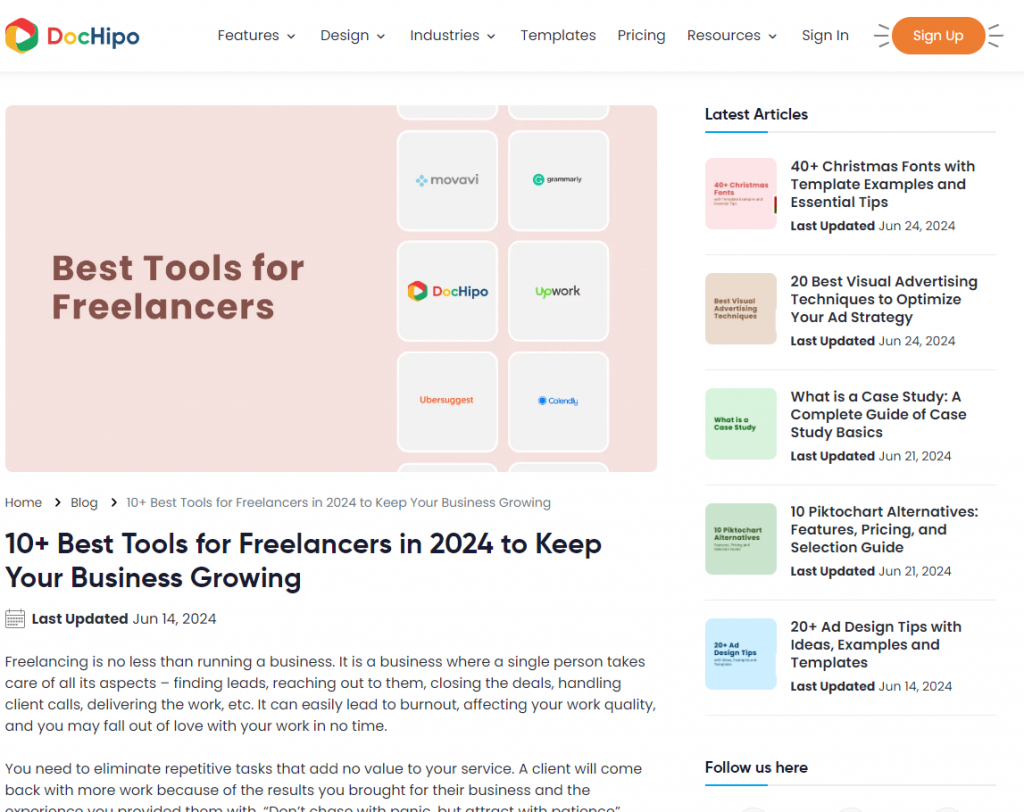
Why it worked
The blog post effectively utilizes the power of listicles to deliver valuable content to its audience. This post works well for inbound marketing because it addresses a specific pain point – finding the best tools for freelancers – and offers a comprehensive, curated list of solutions. This listicle builds trust with its readers by providing clear, concise information and practical recommendations, positioning Dochipo as a helpful and knowledgeable resource.
4. Guest Posts and Link Building
If you’re new to digital marketing, let me break it down. Guest posts are when you write splendid articles and get them published on someone else’s blog or website. Link building? That’s all about getting other websites to link back to yours. These tactics are gold for marketing mavens like you because they boost your visibility, drive traffic, and make your brand look super credible.
Why it worked
Why is this a smart move for inbound marketing? Guest posts get your brand in front of a new audience without spending much on ads. Link building boosts your search rankings, making it easier for people to find you.
It’s not just about numbers; it’s about building relationships and community. Guest posts connect you with industry folks, and backlinks act as trust badges from other sites. You increase visibility, build trust, and establish authority — all while being smart and savvy in the inbound marketing strategy.
5. Reviews, Recommendations and Comparisons
Blogs that feature reviews, recommendations, or comparisons are goldmines for effective inbound marketing. These types of inbound marketing blogging provide readers with valuable insights, helping them make informed decisions.
If you are struggling with low web visitors, try to make content showcasing your opinions on a particular subject, product, or trend. Also, personal recommendations backed up by relevant data make your blogging helpful. Because who doesn’t love to get some advice? Comparison, or the “versus” universe of blogs, will always work for your inbound campaign! Informing readers about the features and key areas of comparison will significantly assist them in making well-informed decisions, thereby eliminating any uncertainties or assumptions.
Example
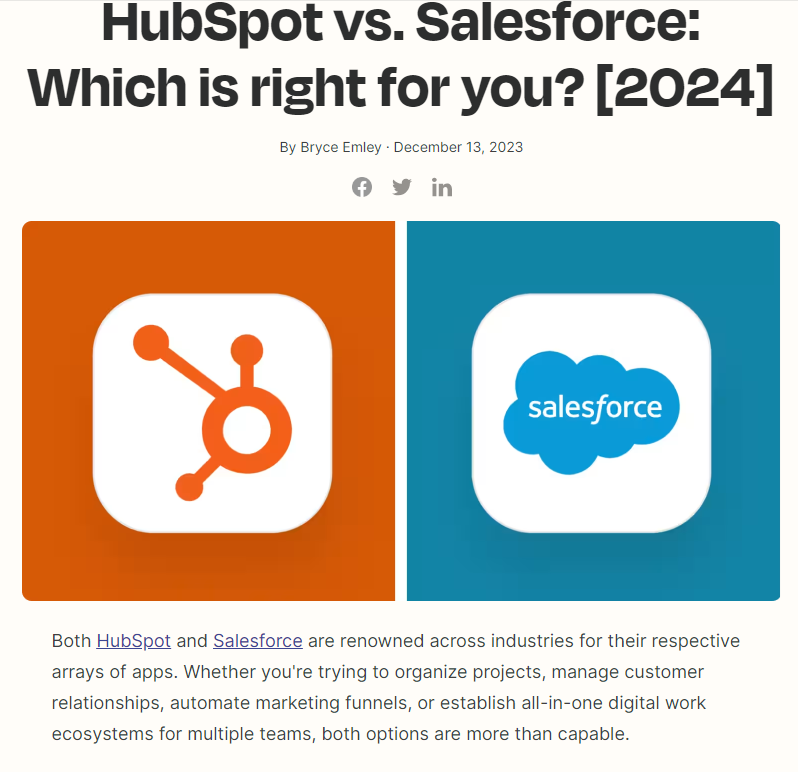
Why it worked
Zapier’s comparison blog is a stellar example of effective inbound marketing. This post succeeds because it addresses a key decision-making point for many businesses: choosing the right CRM tool. By providing a detailed, side-by-side comparison of two industry giants, the post attracts readers actively searching for this information. It’s thorough, unbiased, and filled with practical insights, which helps build Zapier’s credibility as a knowledgeable resource.
6. Seasonal and Topical Content
Let’s discuss why blogging with seasonal and topical content is a smart move for inbound marketing. Think about it — when you create posts around holidays, seasons, or trending topics, you’re tapping into what everyone’s already chatting about. This draws in more readers and makes your content feel fresh and relevant. Plus, these posts are super shareable, which means more folks will see your brand.
So, if you want to boost your visibility and connect with your audience, jumping on seasonal topics and moment marketing content is the way to go.
Example
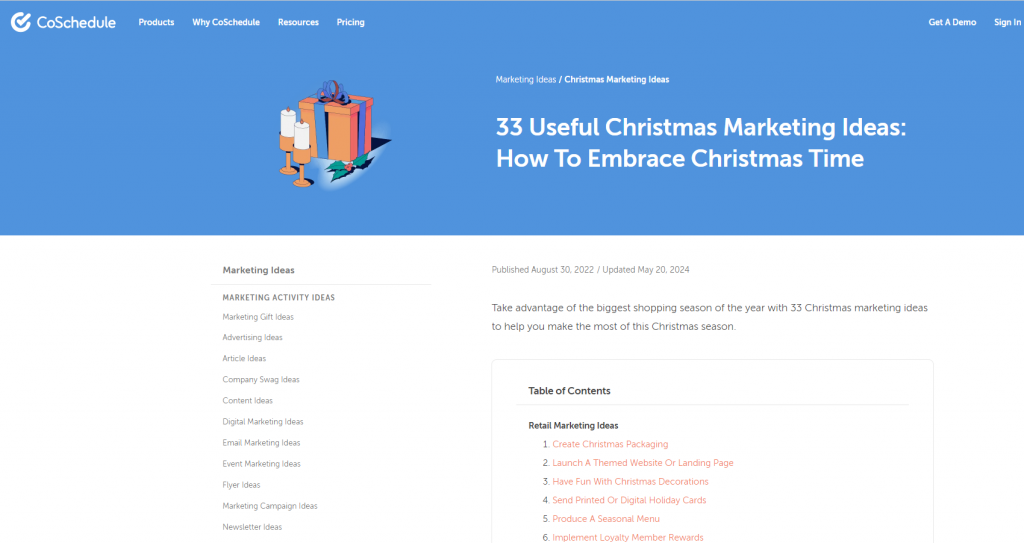
Why it worked
Let’s take a look at why the blog was such a hit. First, it’s all about timing—Christmas is huge for businesses wanting to ramp up their sales. This post zeroes in on that, giving readers practical, actionable ideas just when they need them the most. The format is engaging and easy to follow, helping readers quickly spot the best strategies for their needs. By mixing timely content with valuable tips, this blog post nailed it in driving traffic, engagement, and trust.
7. Problem
Writing blogs that tackle common problems is a brilliant strategy for inbound marketing. These posts resonate with readers who are actively seeking solutions to their issues. By addressing specific pain points, you attract an audience already engaged and interested in what you have to say.
Example
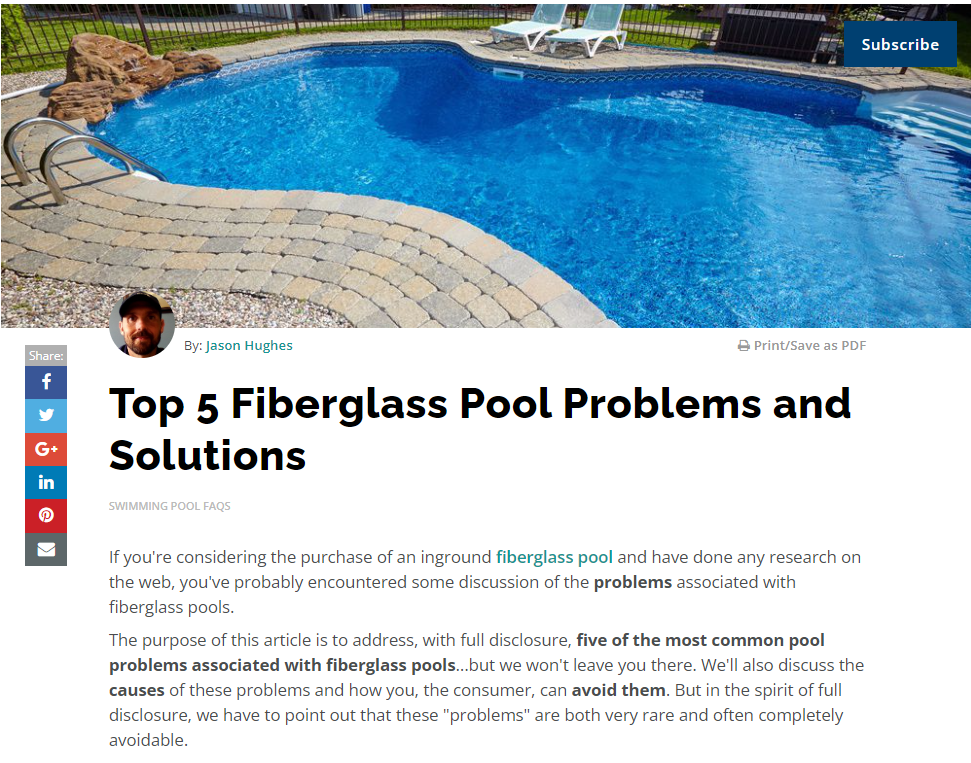
Why it worked
The blog post on River Pools and Spas worked wonders for its inbound marketing. This post is a prime example of addressing customer pain points head-on. It identifies common issues with fiberglass pools and provides clear, actionable solutions. Doing so attracts readers who are actively searching for help with these problems, driving targeted traffic to the site.
8. Thought Leadership Blog
Thought leadership blogs are a fantastic tool for inbound marketing because they position you as an authority in your industry. By sharing insightful, forward-thinking content, you attract an audience that values expertise and innovation. These blogs build trust and credibility, encouraging readers to return for more valuable insights.
Example

Why it worked
The Forbes blog post is a prime inbound example. It works because it taps into a highly relevant topic—remote work—and offers readers valuable insights into future trends. The article attracts professionals eager to stay ahead of the curve by informing them of the current and anticipated shifts. The engaging content, backed by credible sources and expert opinions, enhances the blog’s authority. This approach drives traffic and establishes Forbes as a go-to resource for industry trends, effectively building trust and encouraging repeat visits.
Bonus tip
Do you know what makes blogs super engaging? A suitable blog banner and plenty of spectacular blog graphics.
Check out these blog banners to easily catch the attention of the internet users.

Get This Template and More
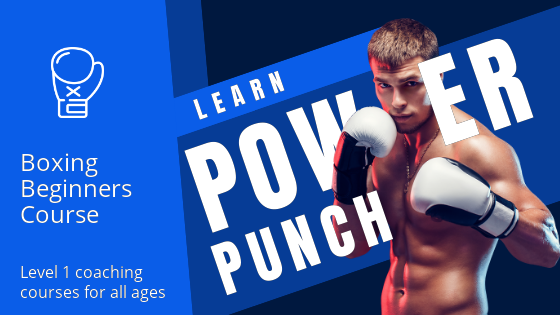
Get This Template and More

Get This Template and More

Get This Template and More

Get This Template and More
And don’t forget to excite your readers with high-quality and edgy blog graphics like the following.

Get This Template and More
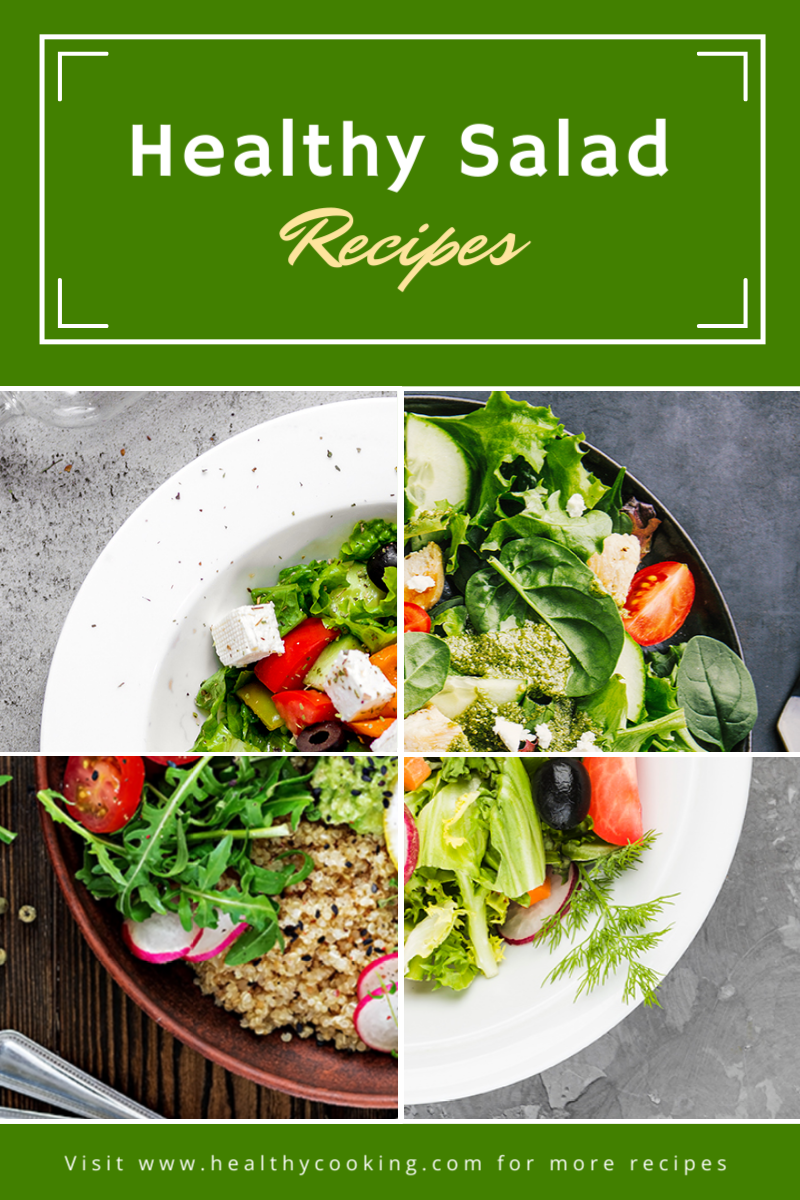
Get This Template and More

Get This Template and More
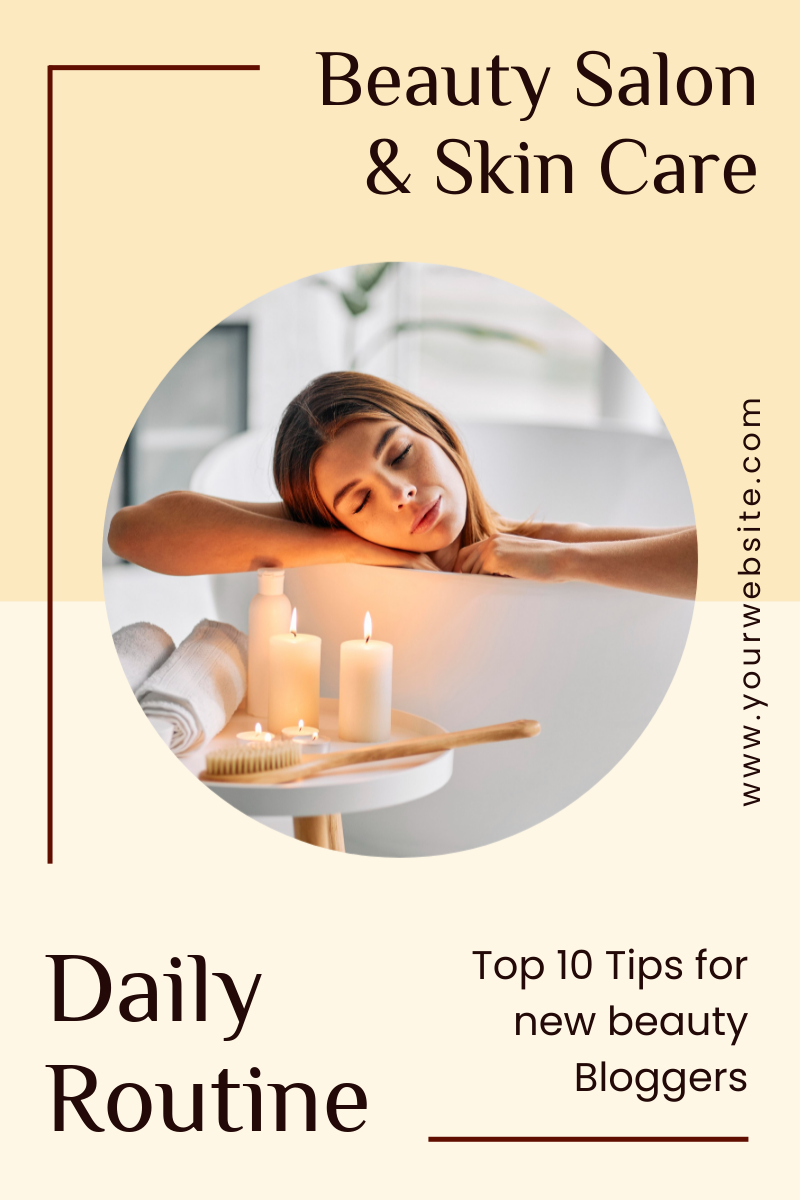
Get This Template and More
B. Examples of Inbound Marketing with Resourceful Content Marketing
So far, we’ve nailed down that content is the true king of marketing. While people often mix up content marketing and inbound marketing, they each have their own roles. Inbound marketing covers content marketing but also includes growing your audience, tracking metrics, testing, and scaling. Meanwhile, content marketing is all about how smartly you create and share content to boost your business.
To get a clearer picture, let’s use a simple analogy. Imagine the principles of inbound marketing as the foundation and framework of a building, providing stability and structure. Content, on the other hand, is the interior design, making the space inviting and livable.
By incorporating AI-powered conversation intelligence software, businesses can gain deeper insights into customer interactions, refine content strategies, and enhance engagement. You will explore the must-haves of content marketing strategies you can exercise to build a loyal army of followers and increase customer retention. Let’s dive into the most preferable content types that get your audience hooked.
9. Case studies
Case studies are powerful lead magnets because they prove the effectiveness of your product or service. They showcase successful outcomes, build trust, and demonstrate your expertise. They also offer valuable insights and practical examples, making them highly engaging and informative for your audience.
Moreover, you can use this content in PDF, presentation, image, or video formats, making it accessible and sharable on any device or online platform. See how easily distributable this marketing case study is.
DocHipo has crafted unique, detail-oriented case study templates for every niche, so you don’t have to spend extra on niche-specific resources each time you create a case study. With these templates, you can easily produce effective case studies without breaking the bank.
Check out the video to create case studies in a jiffy.
Example
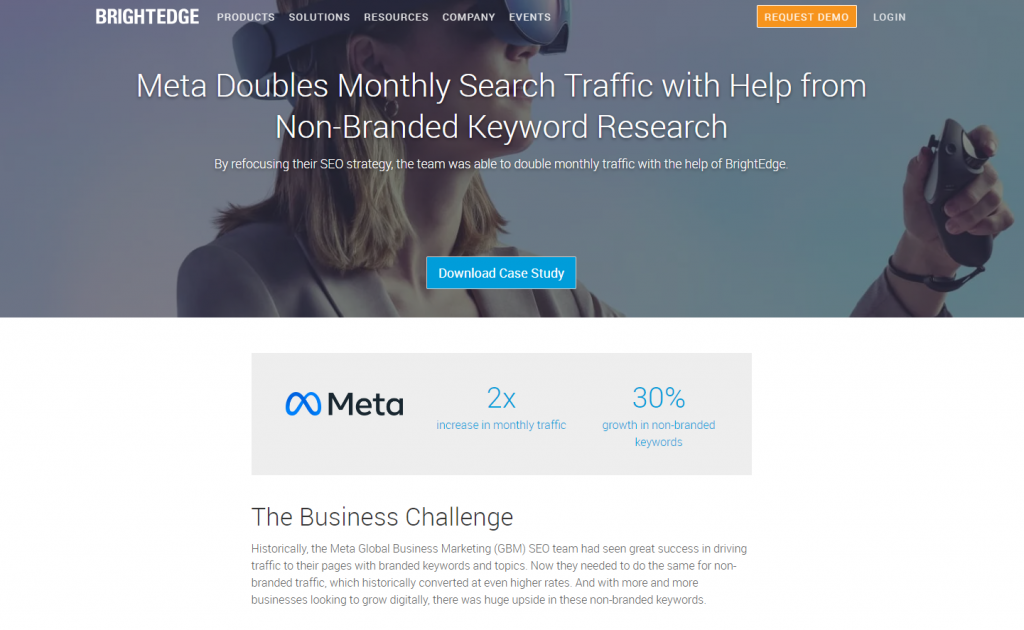
Why it worked
The above case study is a stellar example of successful inbound marketing. It works because it tackles a common goal — boosting search traffic, and shows how BrightEdge helped Meta achieve remarkable results. This case study presents clear, quantifiable outcomes in a simple, easily digestible format. It also provides detailed strategies and insights, offering valuable takeaways for readers.
10. White Papers
White papers are another goldmine that attracts prospects. You can offer in-depth, research-backed information that establishes your brand as an authority in your industry. White papers attract and engage potential customers looking for expertise by providing valuable insights and detailed analysis. Plus, they’re perfect for lead generation—offering a white paper in exchange for contact information helps build your email list with qualified leads. Check out this slick move by Koozai.
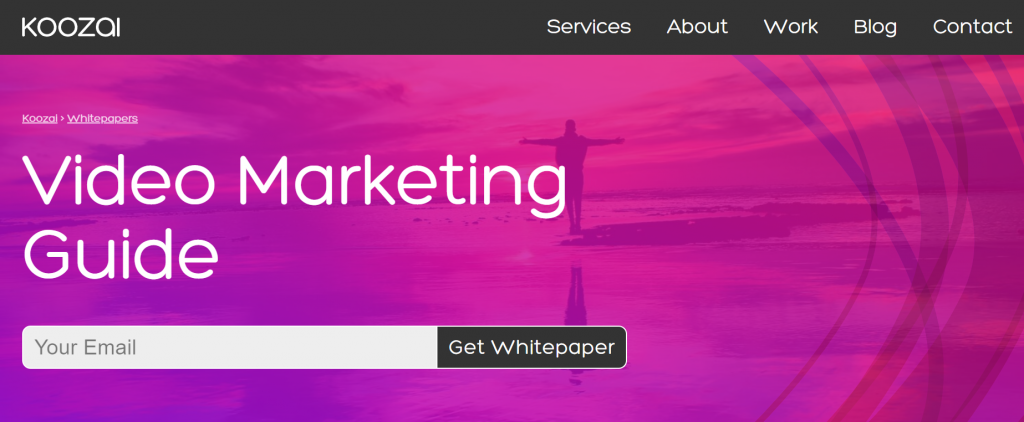
Example
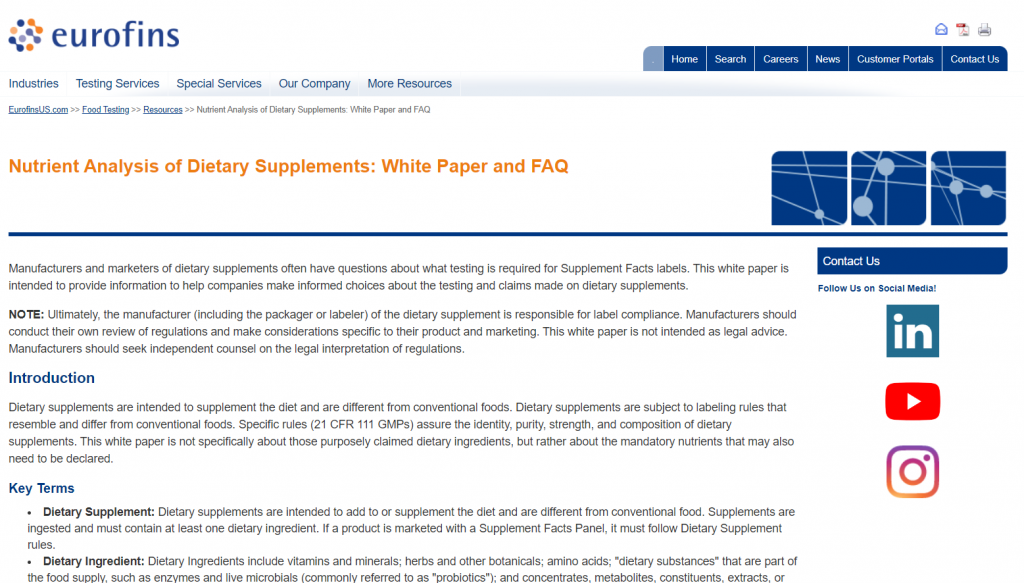
Why it worked
This white paper by Eurofins is a textbook example of successful inbound marketing. This document works because it dives deep into a niche topic, providing valuable, data-driven insights that appeal to professionals in the food and supplement industries. This approach not only drives targeted traffic but also helps convert interested readers into leads.
11. Ebooks
Are you skipping out on using ebooks for lead generation? If you’re not using ebooks in your inbound campaign, you’re leaving money on the table. Ebooks are your secret weapon for capturing attention and turning interested readers into loyal customers.
Ebooks are digital books that can be downloaded and read on any device, from smartphones to desktops. They offer a convenient way for readers to get information and are skyrocketing in popularity.
Why should ebooks be your go-to lead magnet? First, they grab attention and spark interest. You can use an e-book to introduce a new product, share exciting company news, or provide valuable insights that build trust with potential customers. Plus, ebooks are a cost-effective lead-generation tool. Unlike pay-per-click (PPC) ads or social media campaigns, creating an e-book doesn’t need a hefty budget.
Example
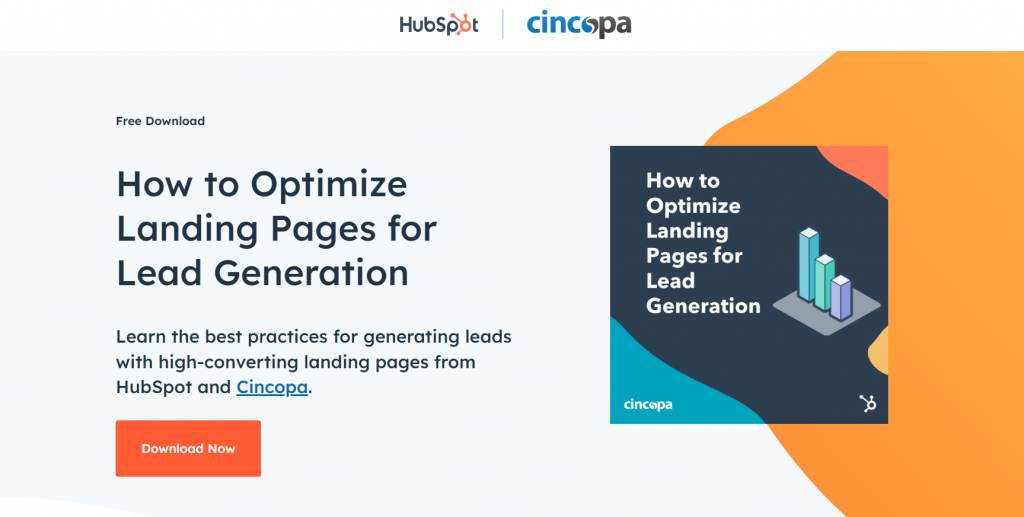
Why it worked
The HubSpot ebook is a prime example of effective inbound marketing. It easily gets leads because it addresses a crucial topic — improving landing page conversions. The ebook provides immense value by offering detailed, actionable tips and best practices, establishing HubSpot as a trusted authority. Additionally, the ebook serves as a lead magnet, capturing contact information from interested readers and allowing HubSpot to nurture these leads with further content and offers. You can, too, drive traffic and more engagement with powerful ebooks.
C. SEO Inbound Marketing
Search engine optimization and inbound marketing are like peanut butter and jelly — they’re amazing on their own, but together, they’re unbeatable. SEO fuels your inbound marketing engine, ensuring your awesome content is seen by the right people. With 68% of online experiences starting with a search engine, it’s clear how crucial this partnership is.
So, how do these strategies work hand-in-hand? SEO lays the groundwork using keyword analysis, interlinking, readable formats, content tags, and backlinks to boost your content’s visibility. Inbound marketing then converts that traffic into leads with relevant, valuable information.
In other words, SEO brings the crowd, and inbound marketing steals the show. I will share some essential tidbits for aspiring SEO inbound marketers like yourself so that you can mindfully analyze the camaraderie between SEO and inbound strategies.
12. Keyword Research and Optimization
Let’s understand the two mammoths of the SEO world: keyword and content optimization. Imagine your content popping up at the top of search results, attracting a flood of visitors. Sounds good, right?
As a digital marketer, you’ve likely heard the term “keyword research” more times than you can count. For a good reason, keywords are the backbone of SEO and online visibility. Finding the right keywords is crucial. Look for keywords with high search volume but low competition. Distribute these keywords evenly throughout your content, from the heading and title to your article’s meta description and body.
Catchy titles are a surefire way to grab customers’ attention since they’re the first thing people see. Use keywords in your titles and headings to rank on Google search results, and keep them between 50 and 70 characters. Remember to tag your content correctly. Use H1 tags for titles and H2, H3, H4, etc., for subheadings. Don’t mess with the format — stick to standard font sizes for a clean, professional look.
Example
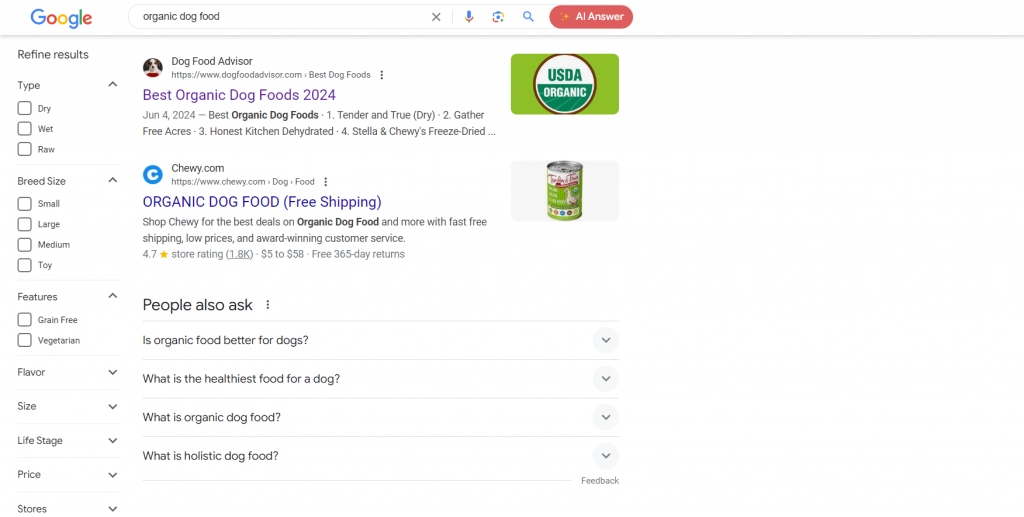
Why it worked
When you search for “organic dog food,” you’ll see a blog and a product page at the top of the results. Ever wonder why? Both use the same target keyword, addressing the specific needs of their audience. But here’s the kicker: the blog ranks higher because it’s optimized content, not just keywords. Meanwhile, the well-known brand Chewy fell short, likely due to minor SEO mistakes on their webpage.
This shows how crucial it is to nail your SEO strategy. The blog didn’t just stop at keywords; it ensured the entire content was spot on. It’s a clear reminder that attention to detail in SEO can make all the difference. So, don’t let those little slips keep you from the top spot!
Let’s discuss the other x-factors of SEO practices you must incorporate into your website content.
13. E-E-A-T Rule
It’s a hot topic in the world of Google’s search algorithms. EEAT stands for Experience, Expertise, Authoritativeness, and Trustworthiness. Boosting your EEAT can make your site stand out from the competition. Even Google favors sites with high EEAT scores because these sites are known for making people-first content.
Let’s understand: what is E-E-A-T?
Experience, a new addition to EEAT, means the content creator has real-world experience in the marketing niche or comes from a related background. It’s highly recommended that you or your content creators have credible experience in specific niches to provide extraordinary insights for the target audience.
After showcasing your experience, it’s time to deliver expert-level content that’s deep and valuable. This is where your expertise shines.
Next up is authoritativeness. This means getting mentions or backlinks from well-known websites. The more authoritative sites that link to you, the better.
Lastly, trustworthiness is all about making people trust your site. Quick load times, a user-friendly interface, high security, and a detailed “Terms and Conditions” page can help you gain users’ trust.
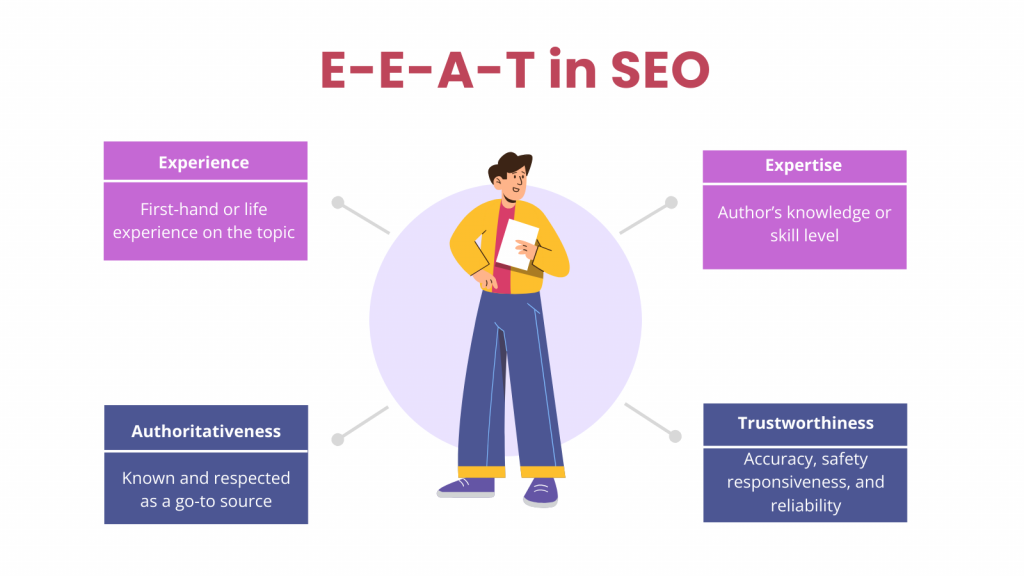
Example
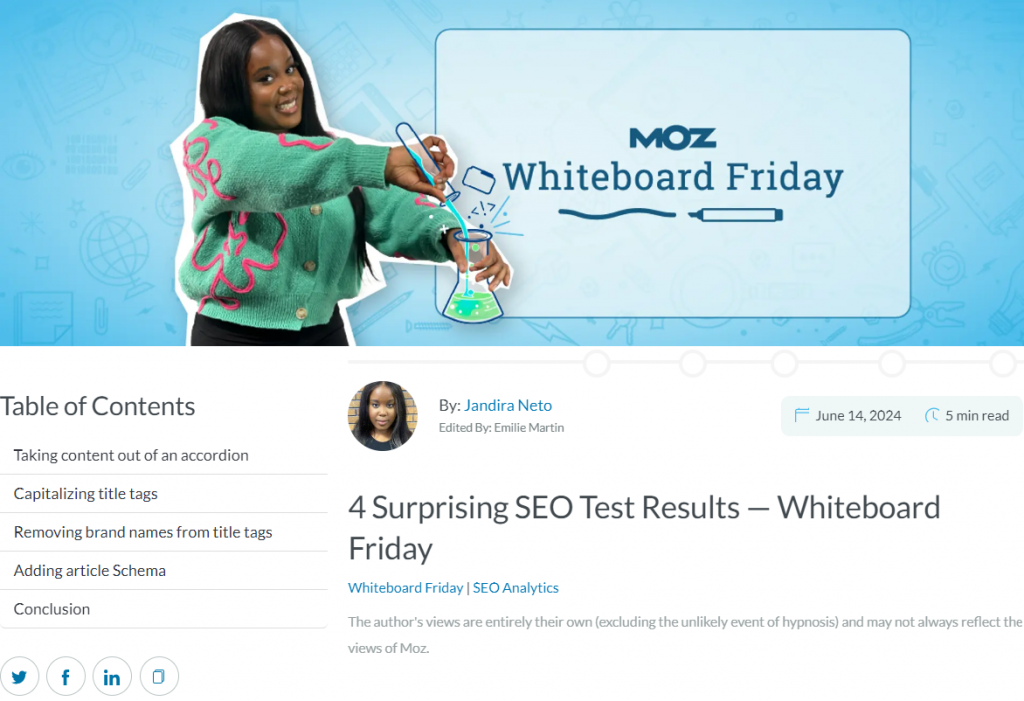
Why it worked
Check out this example from Moz — it’s a masterclass in E-E-A-T. The content starts with a credible author, Jandira Neto, whose association with a well-known brand boosts credibility immediately. She dives into valuable insights and shares her real-life experiments, ticking all the expertise boxes Google loves.
Rich content like this naturally attracts backlinks, effortlessly boosting authoritativeness. However, when it comes to trustworthiness, there’s always room for improvement.
For instance, Moz could work on reducing page load times. In today’s fast-paced world, optimizing your content for a seamless user experience is crucial to staying ahead of the competition.
14. Homepage Content
When buyers land on your website, their first thought is, “Can you solve my problem?” To build an effective inbound marketing website, focus on what your prospects need, not just how awesome your company is — that’s a mistake many businesses make. This is where the UX of web design comes into play; it needs to be client-centric and intuitive. Think like Steve Jobs: “Design is not just what it looks like and feels like. Design is how it works.”
Example
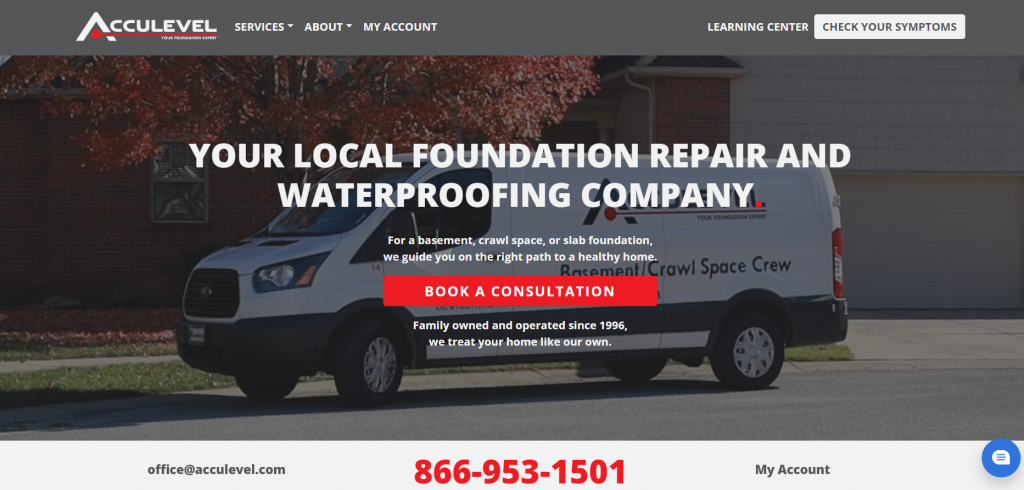
Why it worked
The main goal of your website’s homepage isn’t to spill all your secrets but to get visitors to click through to the next page.
Your homepage should skip the big blocks of text. Instead, keep navigation clean and straightforward, like the above example, so visitors know exactly where to go. When they select a problem, a popup should give more details on why it’s happening and how to fix it.
This homepage design smoothly guides prospects through their buying journey, educating and empowering them to make informed decisions along the way.
D. Email Examples for Inbound Marketing
Engaging email campaigns and email newsletters are fantastic tools to keep your connections delighted. They let you deliver tailored content directly to your audience’s inbox, creating a more personal connection.
15. Personalized Emails
Personalized emails will get you all their attention! By customizing the content to fit the interests and behaviors of your subscribers, you increase engagement and build stronger relationships. Plus, email newsletters keep your brand top-of-mind, drive traffic to your website, and can significantly boost conversions. In short, personalized email newsletters are a powerful way to nurture leads and keep your audience hooked.
Example
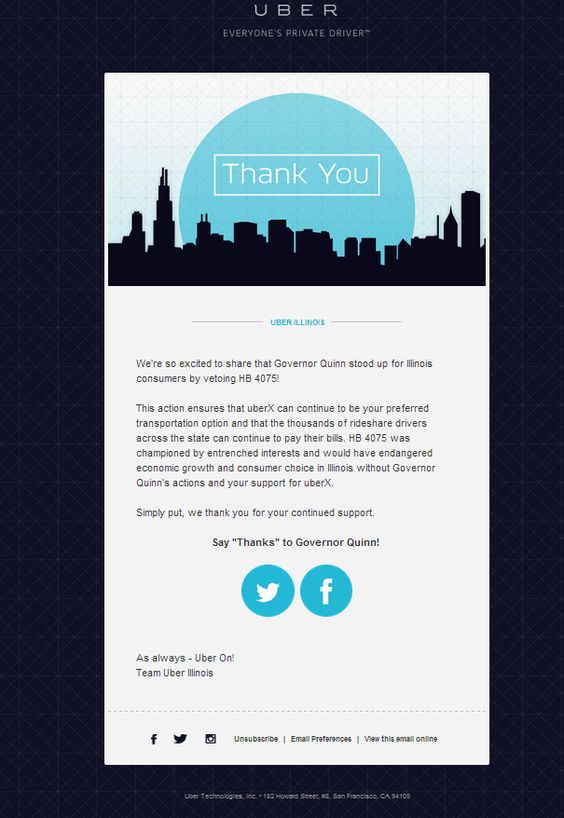
Why it worked
Uber’s personalized email inbound marketing campaign showed you how to get started with it. Using detailed data about customers’ past rides and preferences, Uber crafted emails that spoke directly to individual users. This personalized touch made the emails feel relevant and engaging, encouraging users to take action.
Bonus tip
Always add an eye-catching email header in your email templates to deliver the message prominently.
Explore DocHipo’s email header templates to boost your inbound marketing campaign!
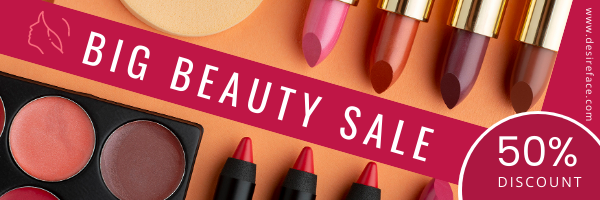
Get This Template and More

Get This Template and More
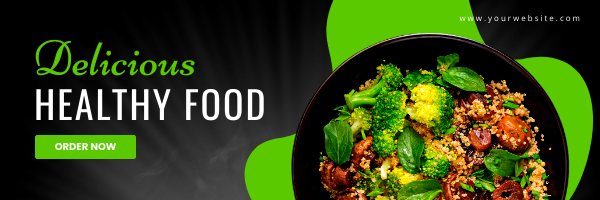
Get This Template and More

Get This Template and More

Get This Template and More

Get This Template and More
Further Reading
E.Inbound Marketing Examples with YouTube Videos
For businesses leveraging YouTube videos in their marketing campaigns, it’s crucial to identify which videos hit the mark. You want your investment to fuel your growth, not drain your resources.
Let’s dive into five types of YouTube videos that top brands swear by for their inbound marketing strategies. These powerful video formats will not only build trust with your prospects but also send your sales through the roof.
16. How-To Tutorials
How-to YouTube videos are fantastic examples of content marketing strategy. They offer practical, actionable advice that helps viewers solve problems or learn new skills. This builds trust and establishes your brand as an industry authority. In short, how-to videos drive traffic, generate leads, and nurture customer relationships.
Example

Why it worked
Once again, DocHipo knocked it out of the park with their short demo video. It was concise, super helpful, and packed with relevant customization suggestions. As someone who loves AI tools, I was stoked to see what this AI-powered design tool could do. The creative team nailed it by creating a quick, easy-to-digest, how-to video showcasing real-life scenarios perfect for any marketer. They truly know their audience inside and out. It’s been rapidly multiplying organic views, resulting in over 28k views in a few months.
You can go the extra mile and create tips videos to showcase your expertise and provide unbelievable solutions for your viewers.

17. Honest reviews
Honest review videos are a goldmine for building trust by providing authentic, unbiased opinions about your products or services. When potential customers see real people sharing their honest experiences, it adds credibility and transparency to your brand.
Example

Why it worked
His review of the iPhone 15 highlights both pros and cons and shows authenticity, which viewers appreciate. This transparency not only enhances the video’s credibility but also fosters a loyal audience who value honest insights. The key ingredient is its ability to inform and engage viewers, ultimately driving more traffic and conversions for the YouTube channel and the brand.
18. Bio Videos
Bio videos or storytelling videos are the icing on the cake for pouring all your heart out into one piece of content that reshapes your business. Such content lets prospects “meet” your sales team before any one-on-one interaction, making your company feel more approachable and trustworthy.
Example

Why it worked
Take Aquila, for instance. The video clearly explains Leigh’s role in the company, shares what he loves about his job, and offers a glimpse into his personal life, giving prospects a sense of who they might work with.
19. Landing Page Videos
Landing page videos are created to capture attention quickly, engage visitors, and convey your message more effectively than text alone. Videos can simplify complex information, making it easier for potential customers to understand your products or services.
Example
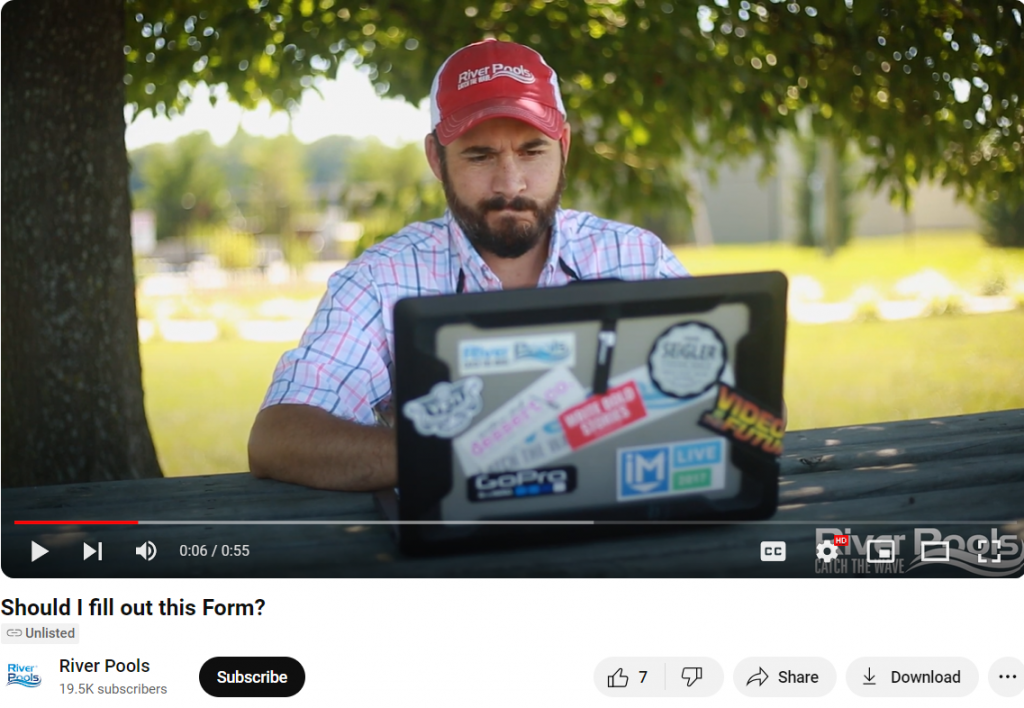
Why it worked
The video sits right next to the form with a clear title: “Should I fill out this form?” It explains what happens next—there is no spam, just a line of communication with one of their reps, an email, and a phone call. It also reassures prospects that there’s no obligation. These subtle hints encourage people to take action.
20. Cost Queries
Even if your costs depend on several factors, it’s wise to discuss them and how they affect pricing, just like Bill Ragan Roofing did in their video “How Much Does a Roof Cost?” in the next example. This helps customers understand what influences the costs and builds transparency.
Example

Why it worked
The video covers factors like square footage, complexity, and material to give prospects a clear idea of how much their roof might cost. It helps them estimate costs without promising a specific number. So, this highly informative article is bound to go viral for those looking for information.
Bonus tip
You can make your YouTube viewers holler in excitement with a customized YouTube banner and YouTube thumbnail.
Check out these irresistible YouTube banner templates created by the DocHipo design team.

Get This Template and More

Get This Template and More

Get This Template and More
Create eye-catching YouTube thumbnails, like the ones below, to instantly connect with your audience.
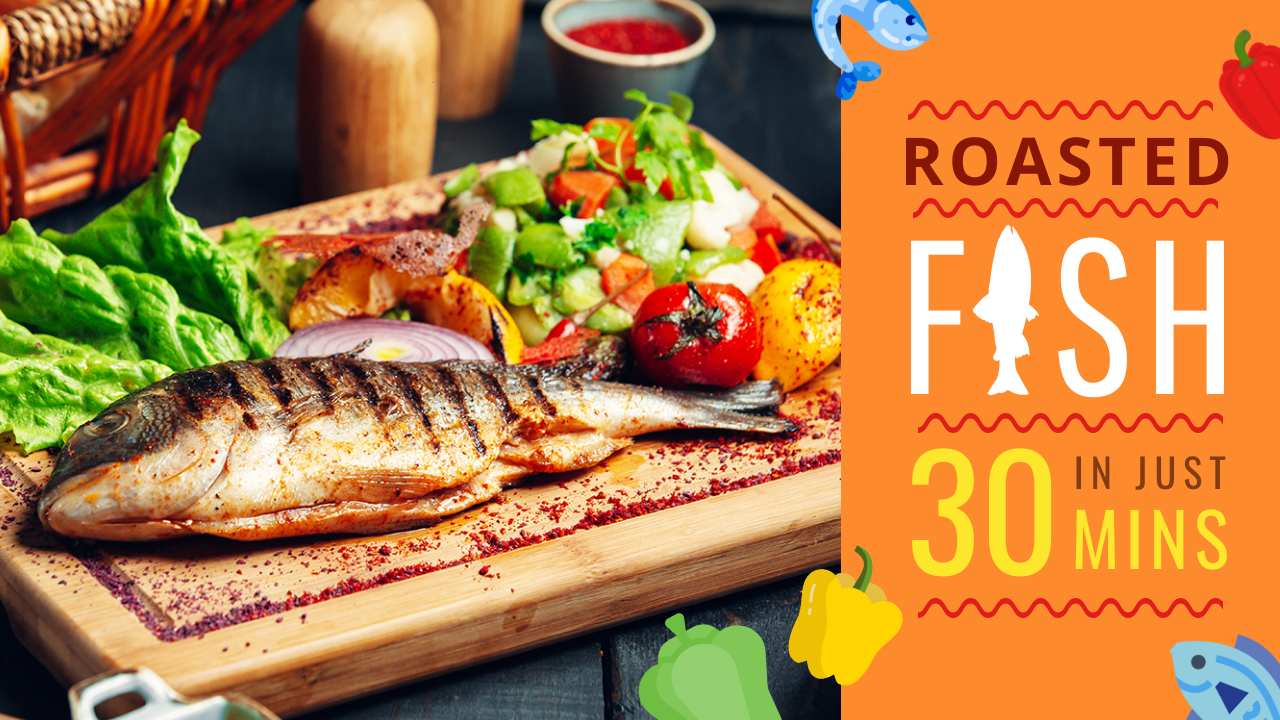
Get This Template and More

Get This Template and More
Further Reading
F. Inbound Marketing Examples for Social Media
The slickest way to build a community is to design social media posts and stories and create visually appealing reels that offer solutions and insights instead of pushing sales.
21. Inbound Social Media Marketing Strategies
Invest in engaging video content, such as reels and behind-the-scenes moments, to excite your audience. Add value with educational content like blog posts, infographics, webinars, and live Q&A sessions to boost your search rankings.
Example
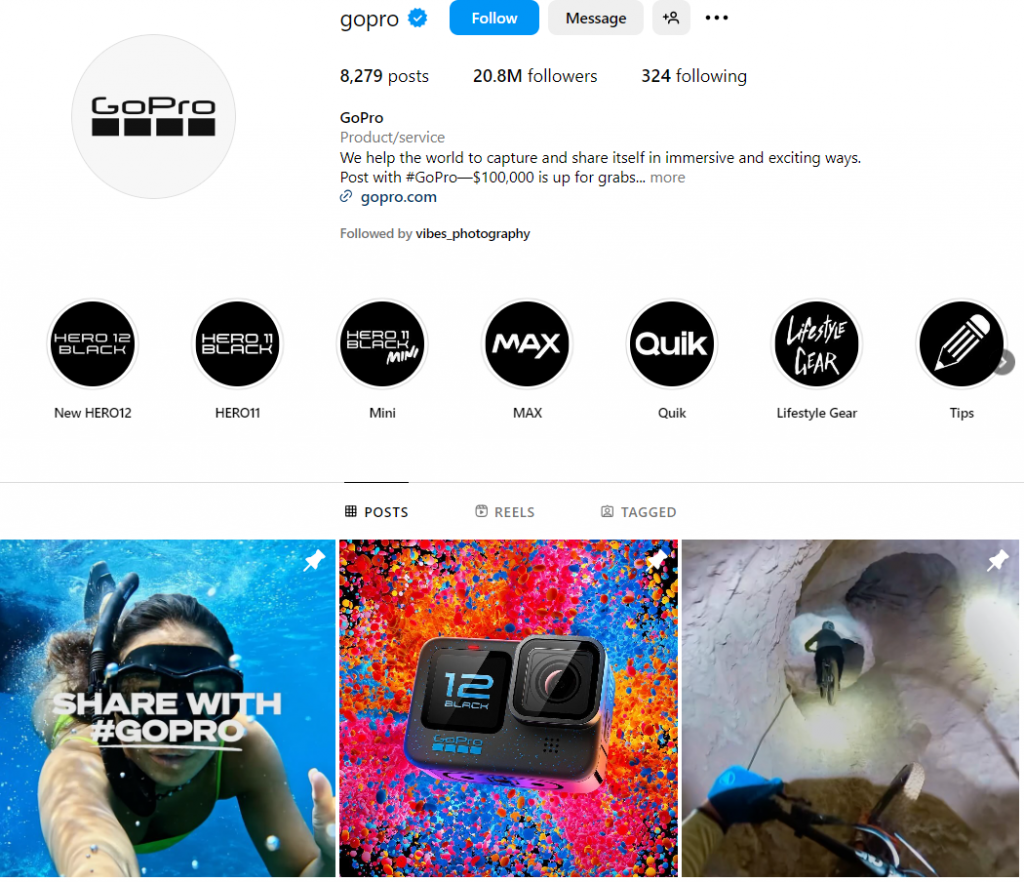
Why it worked
GoPro’s marketing isn’t about product features; it’s all about lifestyle marketing through consumer experience. Their inbound strategy shines with a solid social media presence and loads of user-generated content. This approach has built a loyal fan base without hefty ad spending. GoPro shows that emphasizing lifestyle over features can create a devoted following by focusing on real-life adventures and turning customers into brand ambassadors. Take a cue from GoPro’s inbound marketing examples, and tell your customers to make some buzz about their experience with your brand!
Bonus tip
With DocHipo templates, you can create stunning social graphics for Facebook posts, Instagram posts, X posts, LinkedIn posts, and more for free.

Get This Template and More

Get This Template and More

Get This Template and More

Get This Template and More
22. Influencer Collaborations
Influencer partnerships have revolutionized inbound social media marketing. When you team up with influencers who share your brand’s values and vibe, you amplify your reach naturally and authentically.
Example
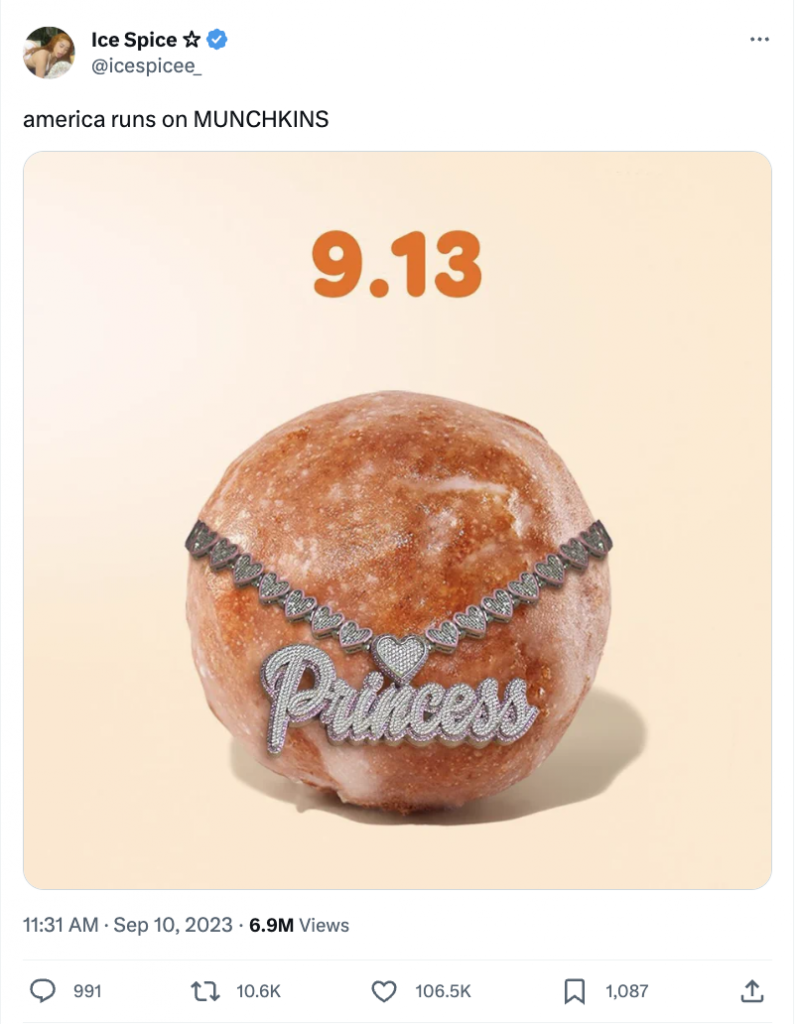
Why it worked
Dunkin’ always creates buzz with their out-of-the-box campaigns. This time, the American donut brand struck a chord with its audience with an unexpected influencer collaboration, the sensational Ice Spice. Like Ice Spice’s songs are topping the billboard charts, this single campaign has created a buzz with over 102k likes on X.
G. Content Distribution Channels for Inbound Marketing
Content distribution channels are crucial for inbound marketers because they amplify the reach and impact of your content. Creating great content isn’t enough; you must ensure it effectively reaches your target audience. By leveraging various marketing channels — such as social media, email newsletters, YouTube, or other professional channels for podcasts and webinars — you can engage different segments of your audience where they are most active.
23. Podcasting
Podcasts offer a unique blend of convenience and intimacy. They allow listeners to consume content while multitasking, whether driving, working out, or relaxing at home. This versatility makes podcasts an excellent medium for reaching busy professionals and decision-makers.
Example
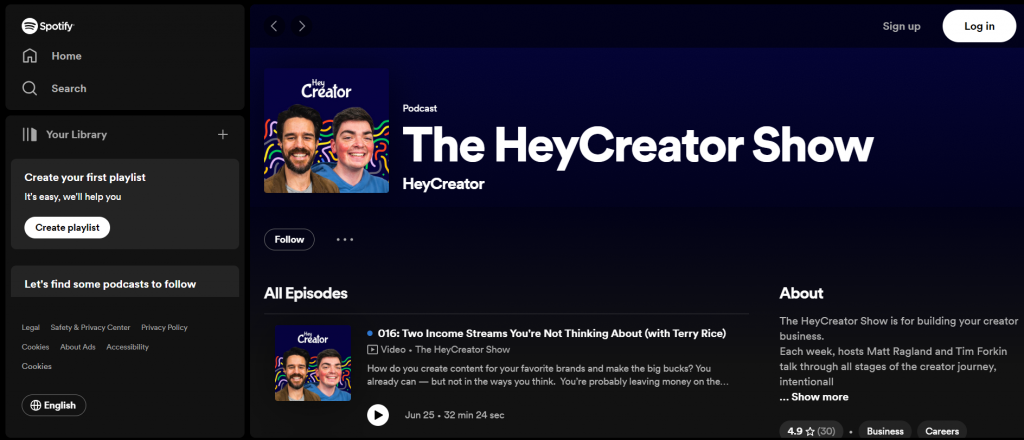
Why it worked
This podcast has drawn in a diverse and engaged crowd by tapping into Spotify’s massive reach and easy-to-use interface. Each episode is packed with expert insights, industry trends, and actionable tips, offering listeners valuable content that truly resonates.
24. Webinars and Live Streaming
Virtual events, like webinars and live streams, offer a flexible alternative to traditional physical gatherings. They break free from travel restrictions, busy schedules, and other logistical hassles, making them a cost-effective way to connect with a broader audience.
Just like any inbound marketing campaign, setting clear goals for your virtual event is crucial for crafting a successful strategy. Building excitement around the topics you’ll discuss is a natural way to generate interest and drum up enthusiasm before promoting the event.
Example
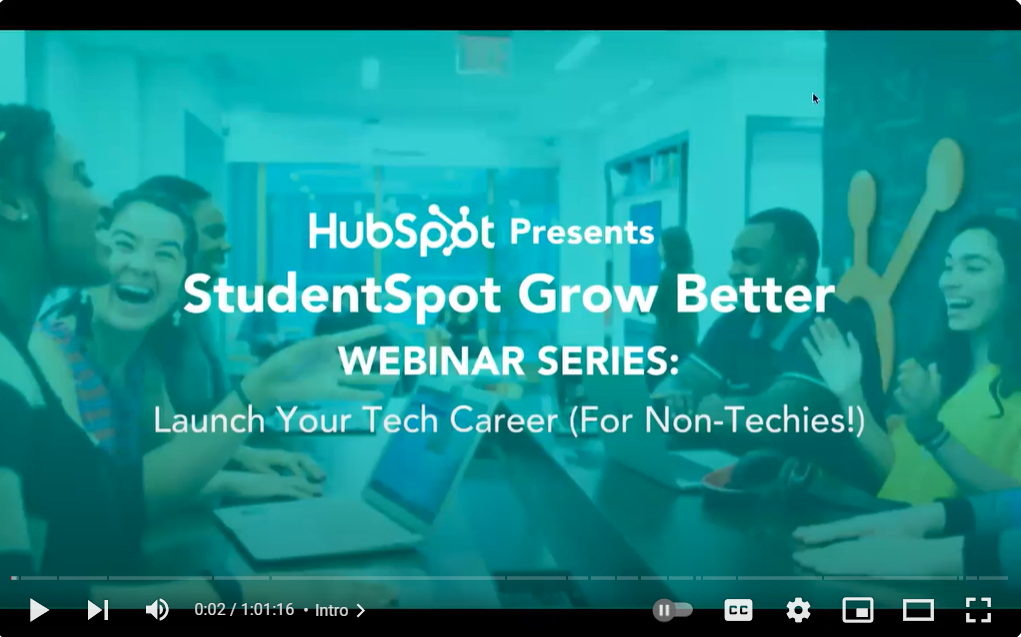
Why it worked
For several reasons, HubSpot’s “Grow Better” Webinar Series hits the jackpot. First, it offers practical tips to boost marketing, sales, and customer service efforts. The episodes are well-organized and engaging, keeping viewers hooked. Plus, it’s free and accessible, making it easy for businesses of all sizes to gain valuable insights. It’s part of HubSpot’s larger ecosystem, guiding the use of their entire suite of products and services.
So, if you’re looking for top-notch inbound marketing examples with webinars, this is a total game-changer!
H. Inbound Advertising
Inbound marketing is becoming increasingly challenging, and many marketing channels are declining in importance. The good news is that pay-per-click or Google search ads can still achieve the ROI you dreamed of from your ad spending.
25. Search Ads or PPC
Google PPC advertising is like a turbo boost for your inbound marketing strategy. Like SEO, it targets users who are actively searching for what you offer.
Example
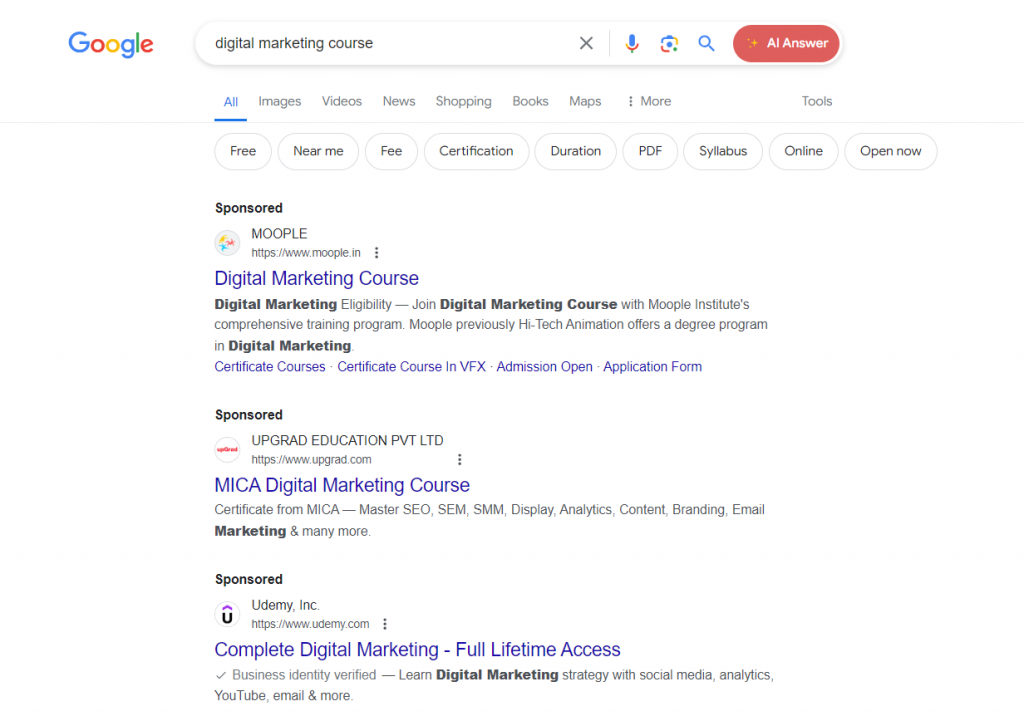
Why it worked
You’ll find plenty of inbound marketing examples involving search ads. Take Google Ads, for instance. By targeting specific, super-relevant keywords, you can connect with people actively looking for what you offer. Picture this: someone searches “digital marketing course,” and bam! Your ad for the beginner’s course pops up right in front of them. Wouldn’t that secure more conversions without any push marketing?
These inbound marketing examples are more like a guide for your successful marketing experiments. Since these are all tried and tested by popular brands, you can safely include them in your inbound strategies for optimal effectiveness.
Use DocHipo for Inbound Marketing Assistance
From stunning social media posts and banners to warm email headers, posters to blog banners, and case studies to infographics, DocHipo has something for every marketing need. In three simple steps, you can find your desired templates, customize them accordingly with various editing tools, and download them in any format without any watermarks, even in the free version!
Watch this short video to get started with DocHipo.
Conclusion
So far, you’ve explored the best inbound marketing examples in different funnel stages. And it’s no rocket science to see these objective-driven inbound strategies are effortless to implement with the right tools. Plus, you can sign up for DocHipo and enjoy free, trendy design templates for any marketing gig.
FAQ
Is Google ads inbound or outbound?
Google Ads can be considered both inbound and outbound, depending on how you use them. When you target specific keywords that potential customers are actively searching for, you’re drawing in interested leads, an example of an inbound campaign.
Is Facebook inbound or outbound marketing?
Well, Facebook can be both — it’s versatile like that! When you use Facebook ads to reach out to potential customers directly, that’s more outbound. But if you’re creating engaging posts and content that draw people in naturally, that’s more inbound.
Is social media inbound marketing?
Social media is a crucial part of inbound marketing. It helps you attract, engage, and delight your audience, driving traffic to your website and boosting your overall inbound marketing efforts.
What type of content is inbound marketing?
Inbound marketing content is all about attracting and engaging your audience. It includes blogs, eBooks, social media posts, videos, infographics, webinars, and emails. As they say, “Content is king,” and inbound marketing is how you crown it!
What is an example of inbound traffic?
Inbound traffic is when visitors come to your site from unpaid sources. For example, if someone finds your blog through a Google search, that’s inbound traffic.


